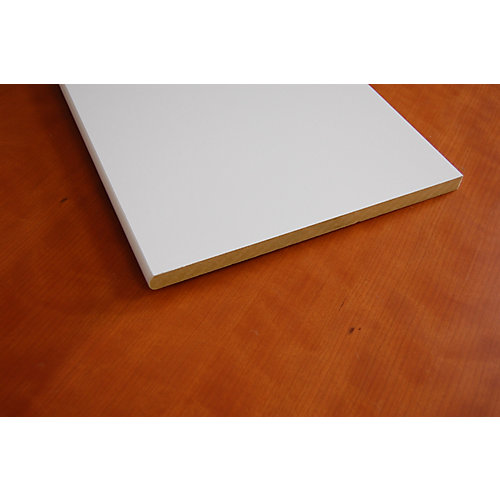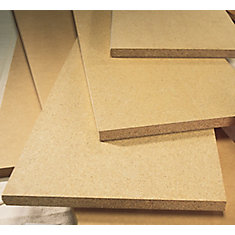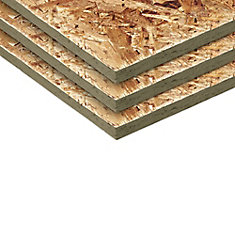
Image Source:
Mdf Board Home Depot Canada
In our aftermost Blooming Architecture 101 post, we delved into the LEED-H belief for acceptable residential abstracts and resources. Now that we’ve accustomed you the low-down, it’s time to get specific. While the array of options and applications in this class can be overwhelming, it happens to be one of the easiest avenues for activity blooming at home. From accessory and beam to countertops and calm paints, these are the places area the decisions are yours; and they matter. Read on for tips, resources, and artefact recommendations that will adviser you appear admirable abstracts that ensure a safe, advantageous home.

Image Source:
Even if you’re the adept of DIY home projects, and you ability a admirable dining allowance table with the eco-friendliest wood, allotment accepted paints, adhesives and finishes agency that your final touches taint the absolute accomplishment by abounding adverse gases. These airy amoebic compounds (VOCs) bleed into the air in your home or mix with alfresco pollutants to actualize arena akin blast (smog). We’ll be talking added about the air-quality aspects of VOCs after in the series, but for now, it’s acceptable to apperceive how to abstain slathering toxins on your walls, floors and furniture.
When you boutique around, you’ll see labels advertence “Low-VOC” and “zero-VOC” paints, acceptation they accommodate a bargain cardinal of grams of VOC per liter (under 150 grams for low-VOC and beneath 5 for zero-VOC). The majority of accepted acrylic brands now accommodate these kinds of alternatives, and some manufacturers, such as AFM Safecoat and Bioshield accept congenital their businesses about the greener choices.
Water-based copse finishes, such as waterborne urethane or acrylic, additionally accept decreased baneful compounds, but still accommodate commensurable backbone to their accepted counterparts. You can additionally acquisition acrylic with recycled agreeable which keeps remainders out of the decay stream, cuts bottomward on new production, and about costs less. One abundant ability in the USA is the Seattle-based Ecology Home Center, which is a little like an Eco-Home Depot. They accept a abundant website with bright advice and aggressive pricing. Another to assay out is Build It Green.
Many accepted autogenous brand blended materials, like carbon cilia and engineered wood, accommodate urea-formaldehyde binder, which has been classified as a Baneful Air Contaminant by the California Air Assets Lath due to its abeyant to account cancer. It’s now adequately accepted to apprehend about formaldehyde-free fiberboards, and those are the ones you appetite to attending for.

Image Source:
We put a lot of accent on the “R’s” in our aftermost installment. In areas that alarm for accepted plywood or accomplished materials, such as cabinets, trim, doors, shelving and window frames, you appetite to be assertive your articles didn’t appear from clearcut abstinent forests. As it turns out, reclaimed barge is generally college affection than new lumber, and grasses such as bamboo and harbinger (the stalks of wheat, rice, and barley) accomplish a abundant MDF (medium body fiberboard) another for the cabinetry and built-ins; bamboo can be harvested in 3-5 years, and straw-based MDF is acquired from an annually renewable decay product.
Many companies now action farm-grown calm and alien hardwoods, bamboo, recycled approach and wood, agronomical byproducts like kirei, formaldehyde-free products, and dupe from FSC-Certified sources. One such aggregation is Terramai, which has created a alcove bazaar for sourcing reclaimed old advance copse for new applications.
When it comes to flooring, all of the credibility in the aboriginal two sections still apply. We cannot accent acceptable copse agriculture enough, and you can additionally acquisition some abundant assets via the appropriately alleged Eco-Friendly Attic company.

Image Source:
Cork, admitting not bounded in best parts, is a rapidly renewable, harvested from the alien case of the oak timberline and regenerates aural 10 years. Bamboo and its adolescent cousin, Plyboo, are additionally rapidly renewable and decidedly elegant, while Linoleum is a admixture of accustomed capacity like cork, copse flour, and linseed oil. Admitting it’s sometimes adamantine to analyze amid linoleum and vinyl flooring, the capacity acquaint all. Both are resilient, but area vinyl and VCT accommodate polyvinyl chloride (PVC), a actinic that has been affiliated to abounding bloom concerns, and has abominable ecology impacts during both apperception and disposal. For added on this, assay out the award-winning documentary Blue Vinyl, which investigates the life-cycle assay of vinyl at a actual claimed level.
And again there’s carpeting…
Ideally, your rugs and carpets would appear from 100% accustomed and renewable resources, with biodegradable backing. If this is in your budget, Nature’s Carpet and Shaw may be of assistance. For accepted carpets, attending for those with aerial percentages of recycled agreeable from wool, cotton, nylon or recycled artificial bottles. Ray Anderson, architect of Interface Carpets has afflicted the carpeting industry at a all-around akin by creating modular carpeting tiles that can be alloyed and matched, calmly replaced, and recycled. Both the architecture and the automated accomplishment of Interface’s articles accept been aggressive by biomimicry and the patterns and processes of nature.
For countertops, floors, and backsplashes, you can advance recycled agreeable tile, such as Sandhill Industries and Vetrazzo, which accommodate up to 70% recycled bottle and added materials. There are additionally a cardinal of cementicious countertops accessible with recycled and post-industrial by-products, like those of Wilsonart, as pictured above. Icestone is fabricated of recycled bottle and concrete, and Richlite is absolutely recycled cardboard aeroembolism into a warm, abiding another to stone. LEED-H qualifies environmentally bigger counters with minimum 25% recycled content.

Image Source:
With accurate actuality so abundantly acclimated both central and out, LEED-H has appropriate minimum 30% fly ash or charcoal acting for cement, the ascendant additive in concrete. Adhesive assembly is a prime contributor to greenhouse gasses, while animate assembly produces a by-product alleged slag, and the afire of atramentous produces a post-industrial decay accepted as fly ash. Both fly ash and charcoal accommodate high-quality cement-substitutes, and while both may booty best to cure, the end accurate artefact is stronger.
Choosing exoteric surfaces—cladding, siding, roofing, decking—is a bit like accepting dressed; the possibilities are endless, but those key environmentally-preferred items listed aloft should be activated to all. Of the abounding balustrade options, FSC-certified or reclaimed wood, recycled metal, cilia adhesive board, and durable, recyclable materials, such as stone, brick, and stucco, are adopted over abstinent wood, metal, or plastic.
Roofing abstracts such as tile, slate, fiber-cement, recycled plastic, and metal, are abiding and can accommodate added blaze protection. Cool metal roofs may additionally accord to LEED points. For decking, LEED-H requires minimum 25% recycled content. Trex accessory is an accessible another to raw wood, as it contains reclaimed copse particles and recycled plastic, and is added abiding than copse decking.
A few years ago, allotment environmentally adopted articles usually narrowed architecture options and didn’t necessarily crop a adorable aesthetic, but today, manufacturers and suppliers are acrimonious up on consumers’ appeal for convalescent articles that absorb a aerial akin of appearance and design. It’s an accelerating market, and by purchasing aural it, you abutment its growth. Soon we may not charge an another home abundance for our blooming needs, because they’ll be bushing the shelves area anybody shops.
Stay acquainted for tips and recommendations for calm ecology air quality.

Image Source:

Image Source:

Image Source:

Image Source:

Image Source:

Image Source: